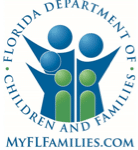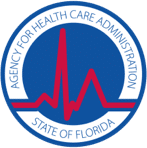Post-Traumatic Stress Disorder (PTSD)
Home » What We Treat » Post-Traumatic Stress Disorder (PTSD)
What Is Post-Traumatic Stress Disorder (PTSD)?
At one time or another, everyone experiences something traumatic. Often, these terrifying events are unforeseen. Regardless of whether they begin and end in an instant or happen over time, the effects of trauma can last for the rest of our lives. Post-traumatic stress disorder (PTSD) is characterized by anxiety from previous traumatic events and can affect anyone who is predisposed at any point in their lives. The most common symptoms of PTSD include nightmares, flashbacks of the event, depression, and increased irritability.
For example, rape victims may experience reoccurring nightmares and relive the attack for years after the incident. Additionally, it’s not uncommon for war veterans—especially those who have experienced combat—to have long-lasting anxiety, flashbacks, or angry outbursts. And children who are trauma victims or witnesses of abuse may withdraw from friends, refuse to talk, or experience frequent stomach aches.
According to the National Institute of Mental Health (NIMH), post-traumatic stress disorder affects 7.7 million adults. However, women are more likely to develop PTSD than men. The symptoms of PTSD can range from mild to severe and usually begin within three months of the traumatic event.


Types of PTSD
There are four types of PTSD:

Acute Stress Disorder
Symptoms appear within the first month of the trauma and last between two days and four weeks.
Acute PTSD
Symptoms last for more than four weeks after the trauma.
Delay Onset PTSD
Diagnosed when the signs and symptoms develop years after the traumatic event.
Chronic PTSD
Symptoms last for more than three months, disappear for a few days, and then reappear. The degree of PTSD varies among individuals. Some people experience mild symptoms—such as irritability—while others are debilitated by the co-occurring disorders (also known as dual diagnosis) that often accompany PTSD, such as substance use disorder, depressive disorders, and anxiety disorders. That’s why it’s important to seek help from a qualified mental health professional to treat the dual diagnosis to ensure a full recovery.
Common Symptoms of PTSD
- Reliving the trauma
- Unexplained fear
- Low self-confidence
- Anger
- Frightening memories
- Emotional numbness
- Anxietym
- Depression
- Avoiding thoughts about the event
- Loss of interest in activities
- Blackouts
- Sleep problems
- Emotional detachment
- Substance abuse
- Easily startled
- Nightmares
- Concentration problems
- Memory problems surrounding the event
Note: Because these symptoms don’t always indicate the presence of PTSD, please contact your physician or mental health treatment provider to obtain an accurate diagnosis.
Treatment for PTSD
Many people suffering from PTSD fail to seek treatment because of misidentifying or failing to recognize their symptoms as trauma-related. They may also not realize that their PTSD is treatable. Additionally, it can be challenging for victims of trauma to come forward and seek help as those who have gone through a traumatic event may feel shame, guilt, fear, or mistrust.
At Lifeskills we help our clients heal from the emotional and mental traumas that prevent them from moving forward. We help clients resume functioning as they did before the trauma and to move past issues surrounding the trauma.
Our Trauma Treatment Pathway helps clients process their past traumas so they can progress through recovery. The Trauma Treatment Pathway includes cognitive processing therapy (CPT), eye movement desensitization and reprocessing (EMDR), seeking safety, and dialectical behavior therapy (DBT).
Interested in learning more
about Lifeskills treatment for post-traumatic stress disorder?
Call us at 954-953-1742 or fill out our contact form.
Call us at 954-953-1742 or fill out our contact form.






